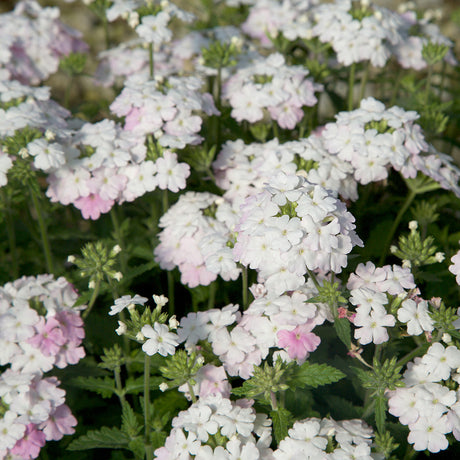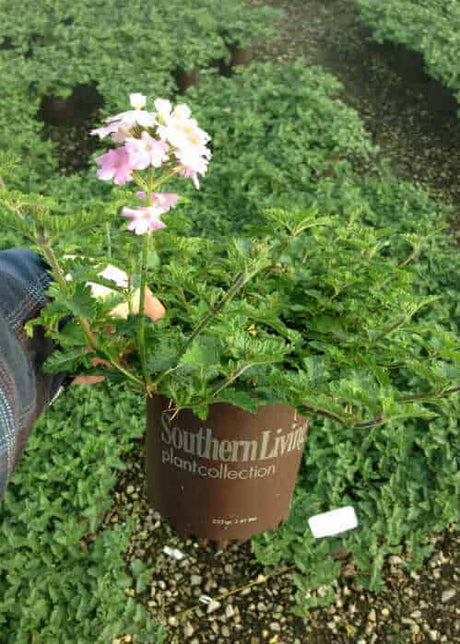FiltersFilter & Sort
Southern Living Plant Collection
From $19.99Unit price /UnavailableIn stock (476)- Sold out
Southern Living Plant Collection
EnduraScape White Blush Verbena
From $19.98Unit price /Unavailable
Verbena plants are a popular choice for gardeners due to their attractive, brightly colored flowers and their ability to thrive in a range of growing conditions. With over 250 species of verbena plants, there is a variety available to suit almost any garden.
What are Verbena Plants?
Verbena plants belong to the family Verbenaceae and are native to the Americas, Europe, and Asia. They are herbaceous perennials or annuals, with small, fragrant flowers that are typically pink, purple, blue, or white. They grow best in full sun and well-drained soil.
Types of Verbena Plants
There are many different types of verbena plants available, each with its own unique characteristics. Here are some of the most popular types:
- Homestead Purple Verbena - This variety of verbena is known for its striking purple flowers and its ability to survive in a range of growing conditions.
- Tapien Verbena - The Tapien verbena is a low-growing, trailing plant that is ideal for hanging baskets or as ground cover. It produces small, brightly colored flowers in shades of pink, purple, and white.
- Snowflurry Verbena - This variety of verbena is prized for its white flowers, which bloom profusely from late spring to early fall.
- EnduraScape Verbena - The EnduraScape verbena is a hardy plant that can withstand extreme heat and cold, making it an excellent choice for gardeners in challenging climates.
- Soil and Sunlight - Verbena plants prefer well-drained soil and plenty of sunlight. Choose a location in your garden that receives at least six hours of direct sunlight per day.
- Watering - Water your verbena plants regularly, especially during hot, dry weather. Be careful not to overwater, as this can cause root rot.
- Fertilizer - Use a balanced, slow-release fertilizer to promote healthy growth and vibrant flowers.
- Pruning - Prune your verbena plants regularly to remove dead or damaged foliage and to promote new growth. Deadheading spent flowers can also help to encourage the plant to produce more blooms.
- Pest and Disease Control - Watch out for pests such as aphids and spider mites, which can damage your verbena plants. You can use insecticidal soap or neem oil to control these pests. Verbena plants can also be susceptible to fungal diseases such as powdery mildew, which can be treated with a fungicide.











